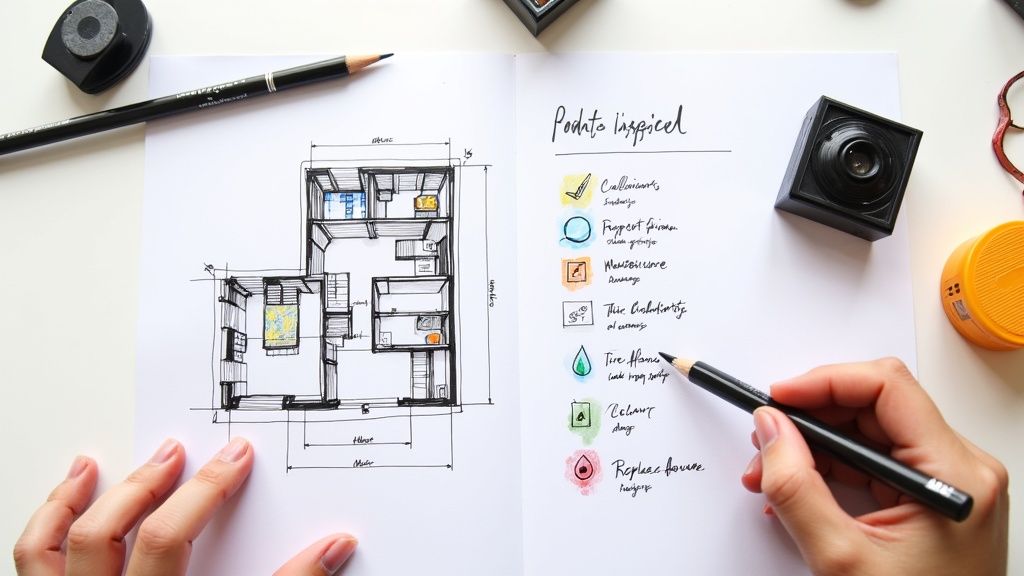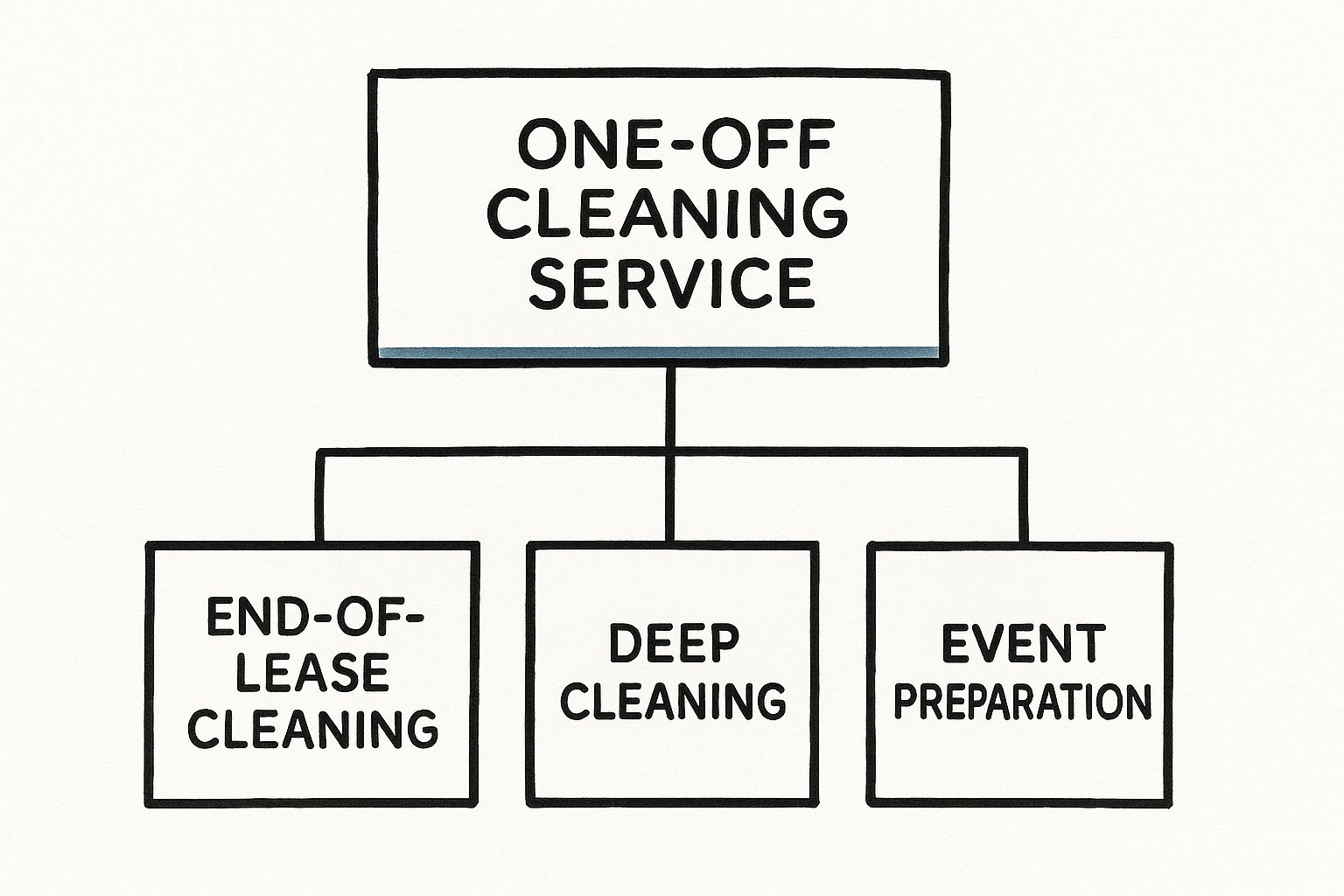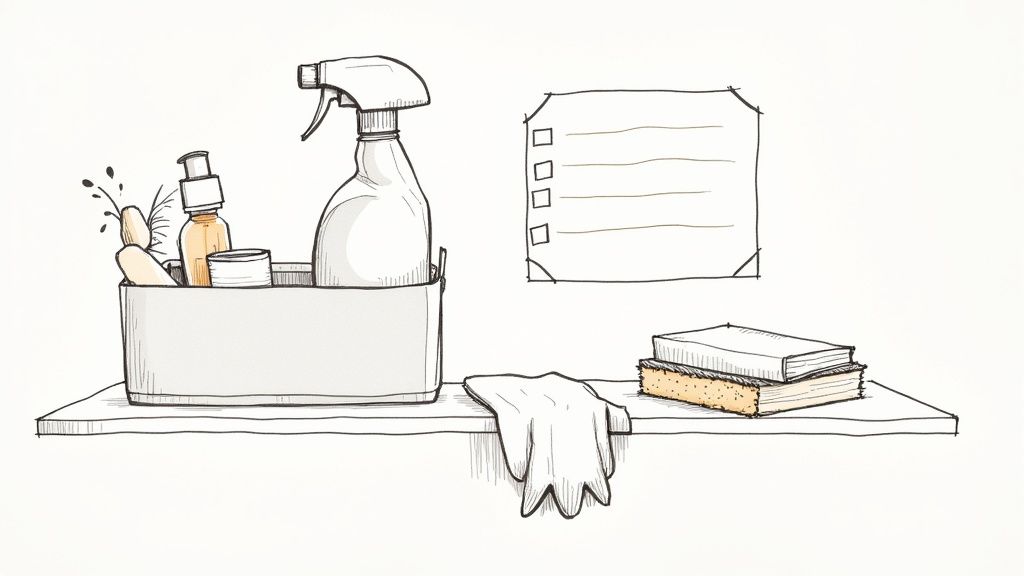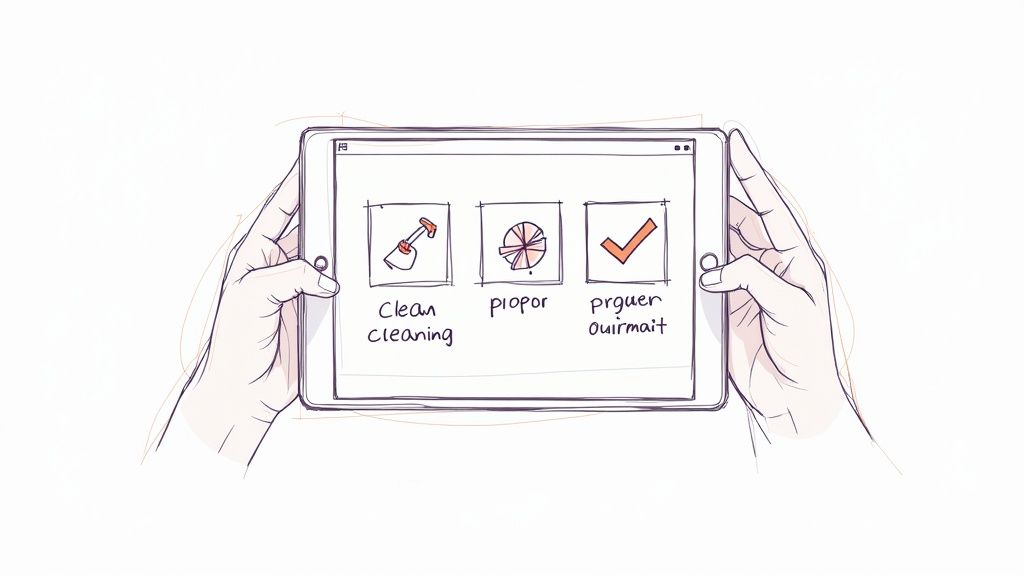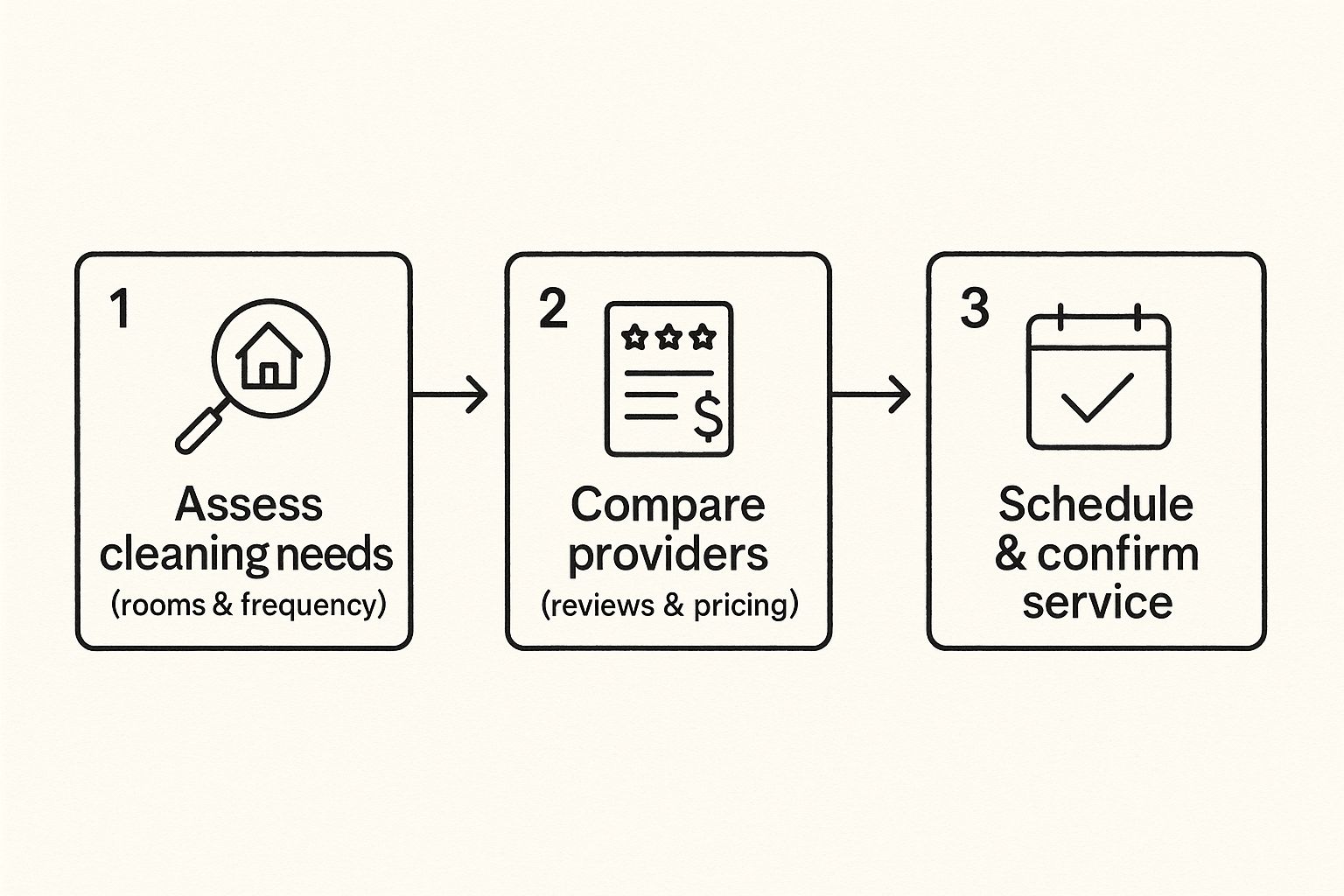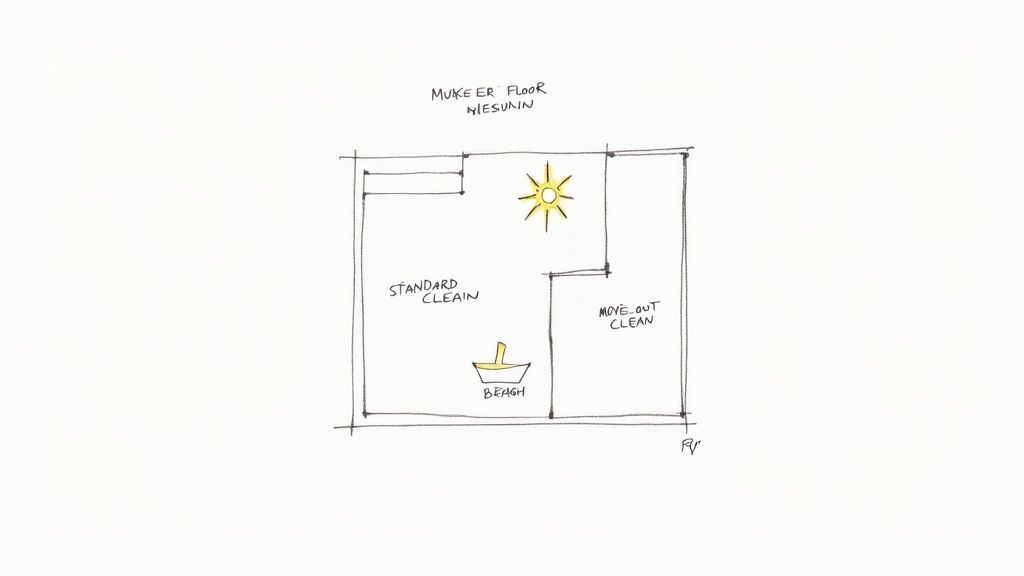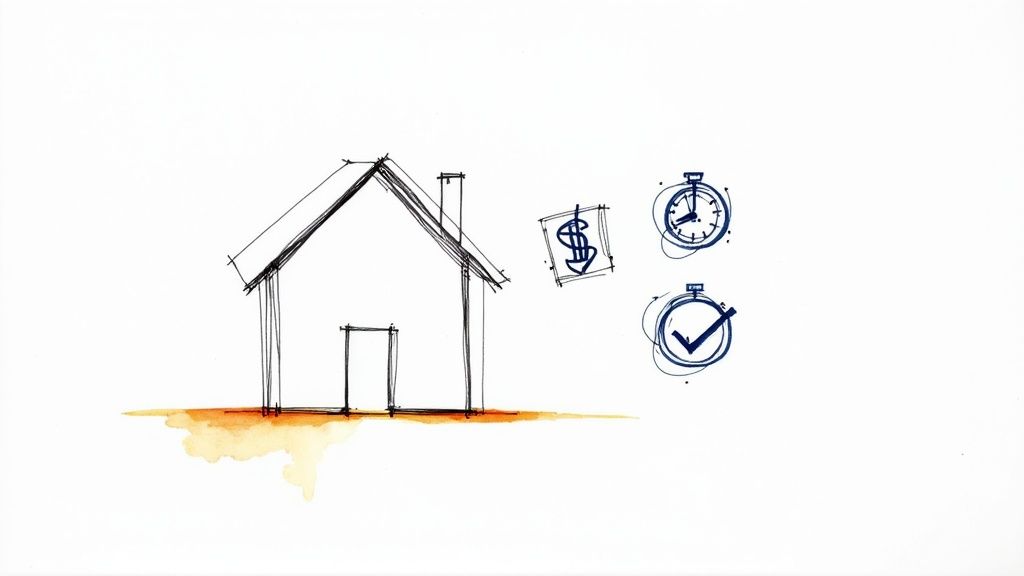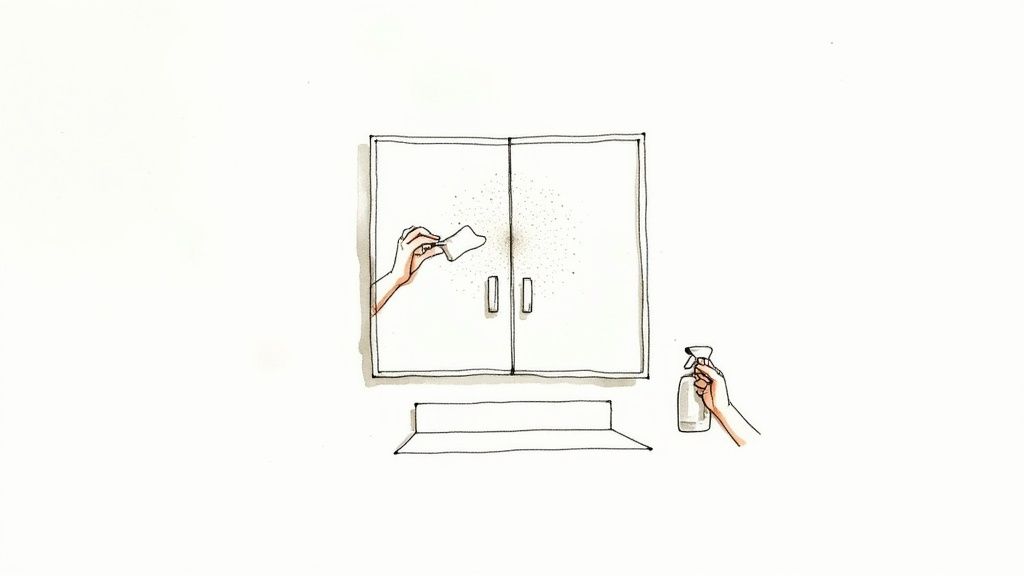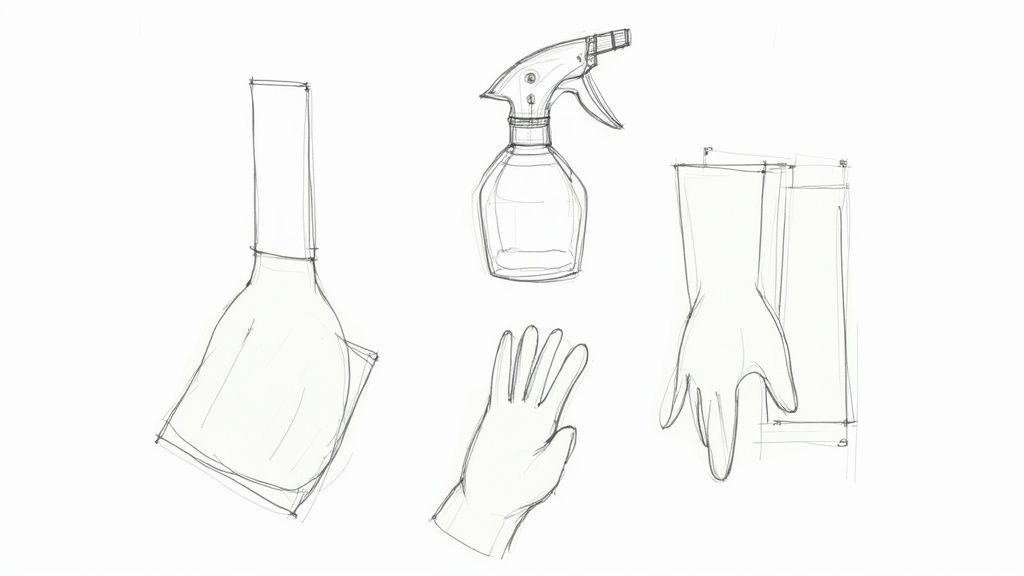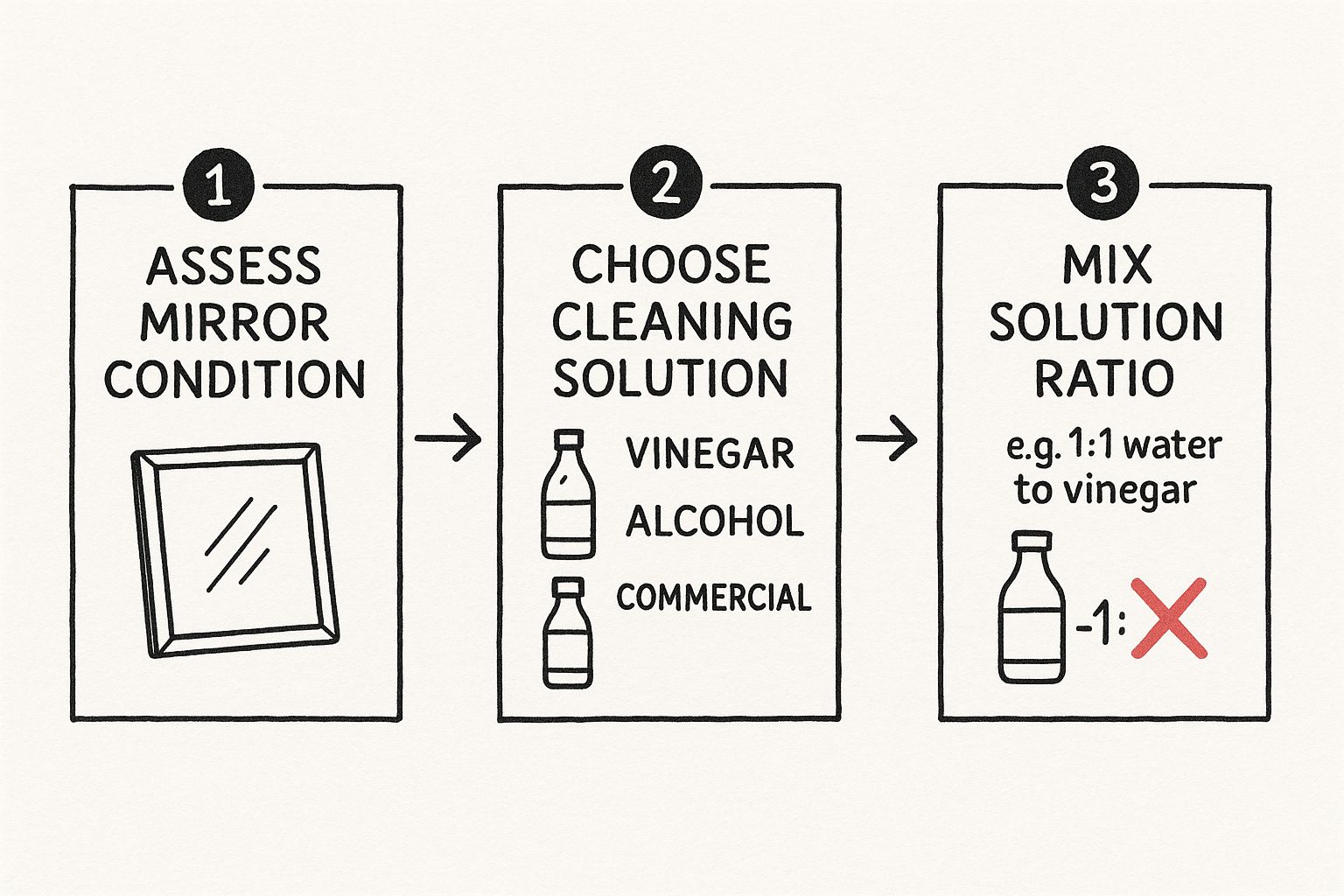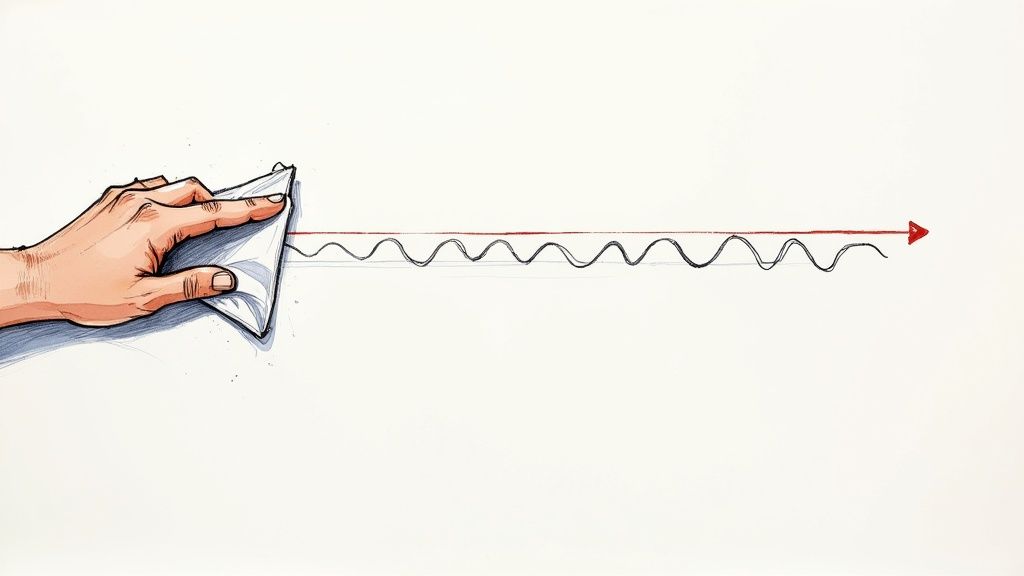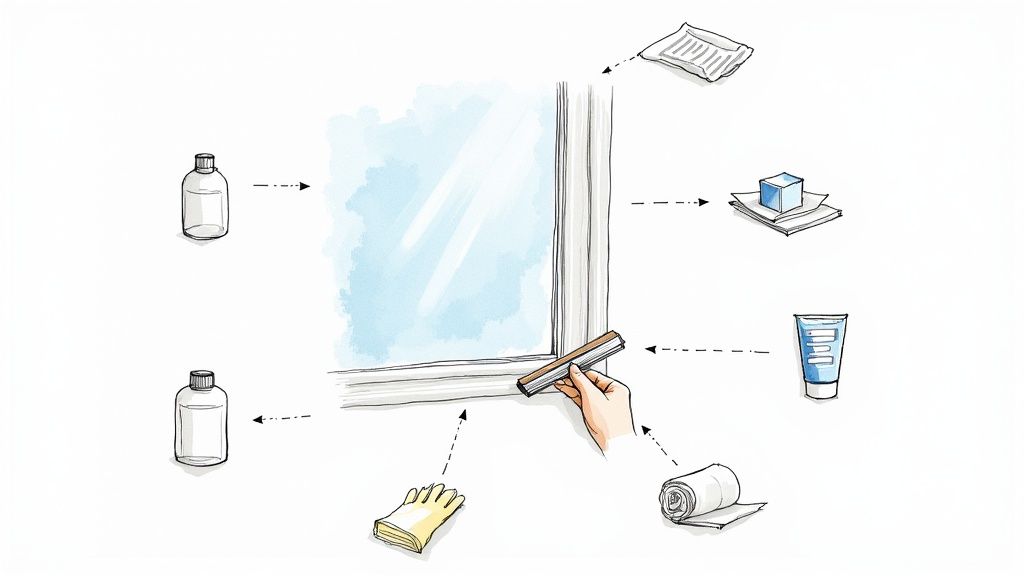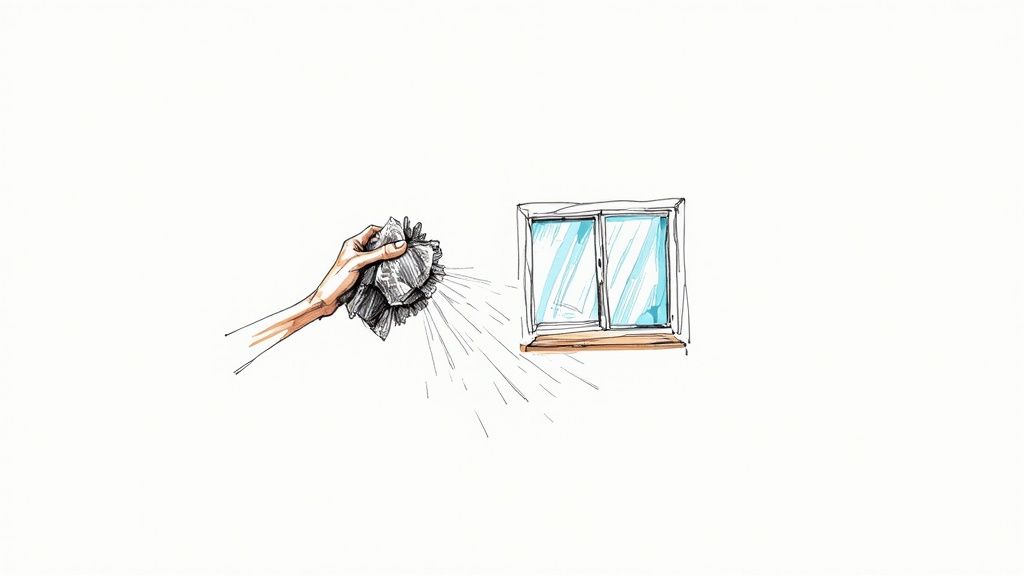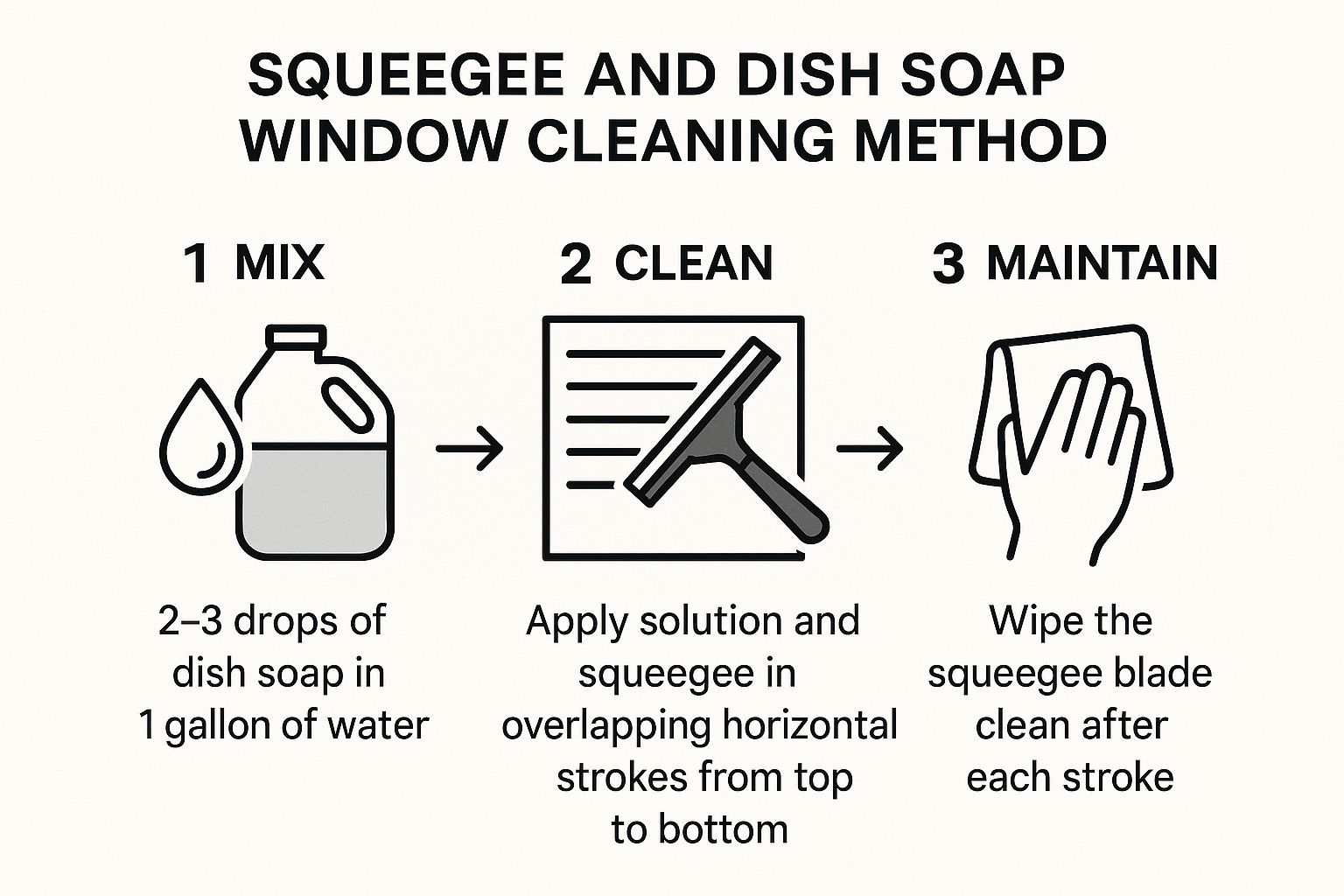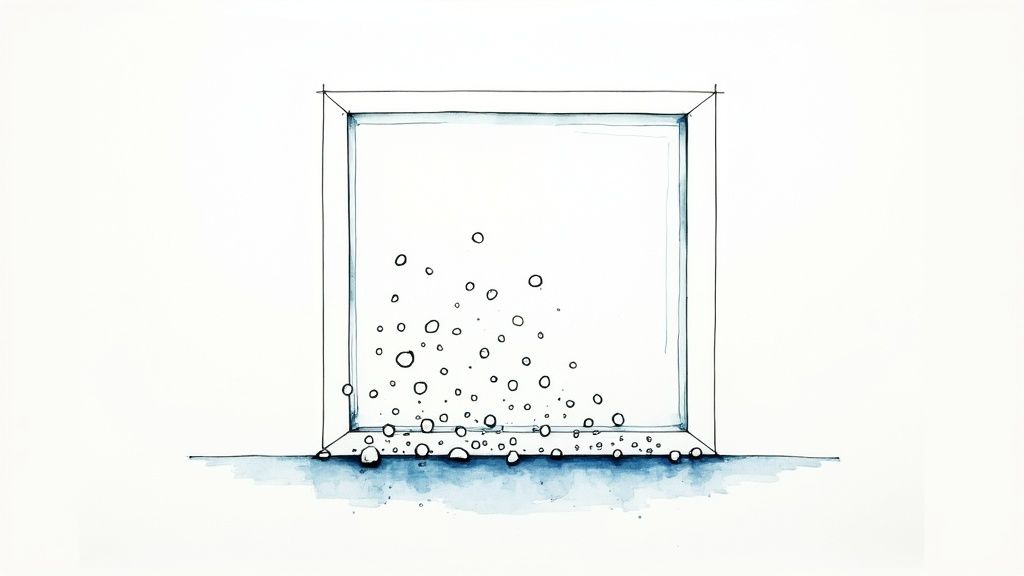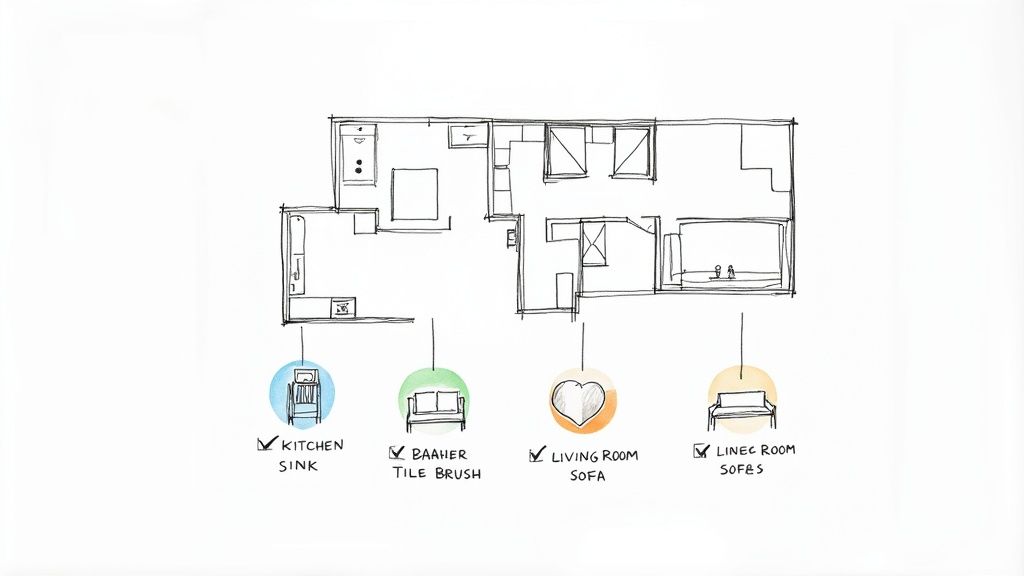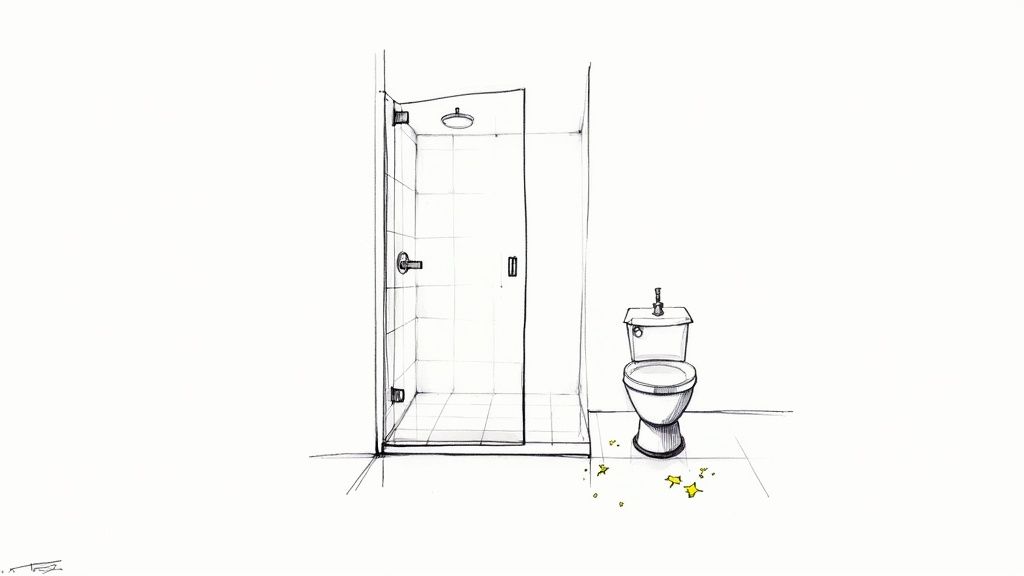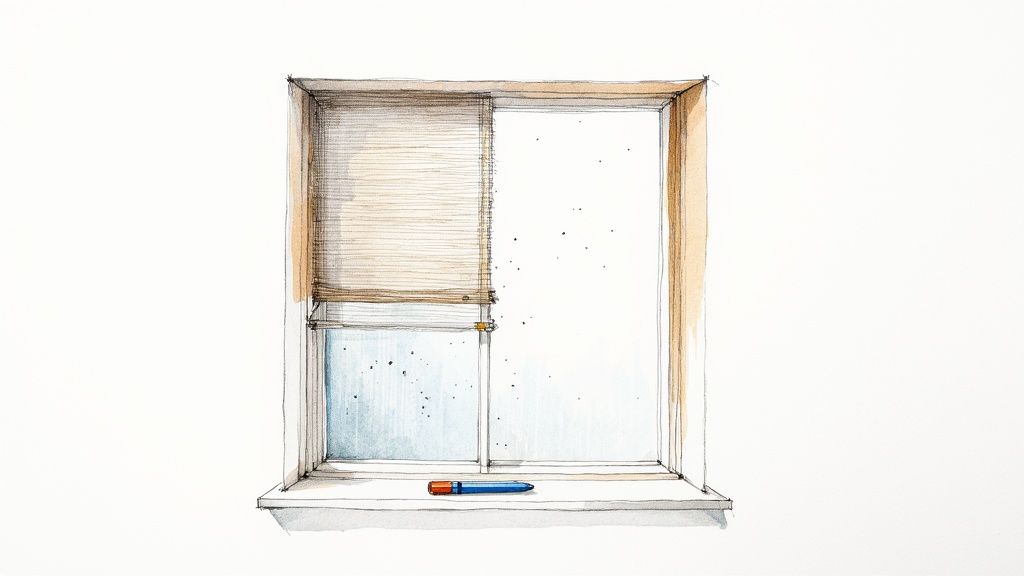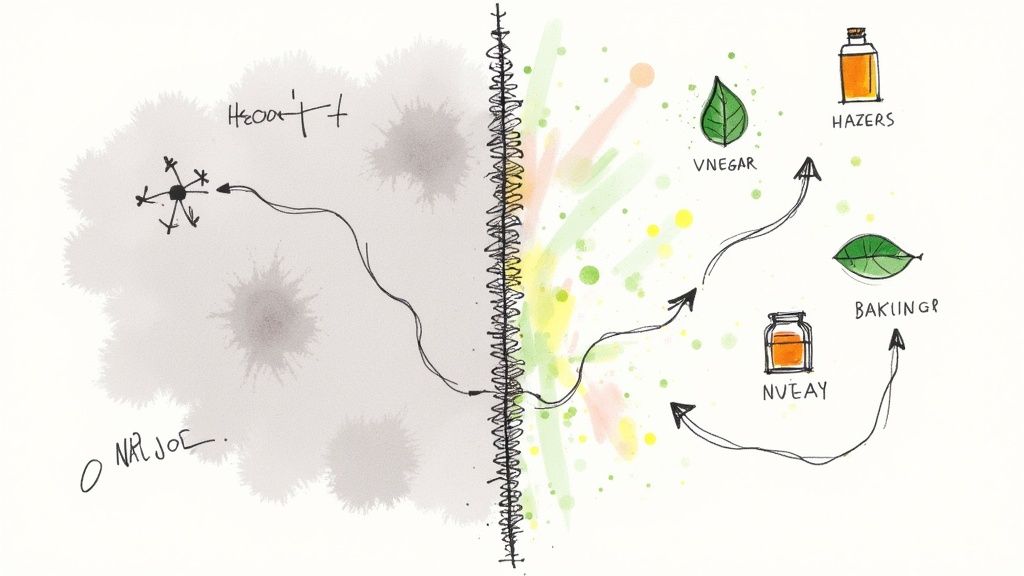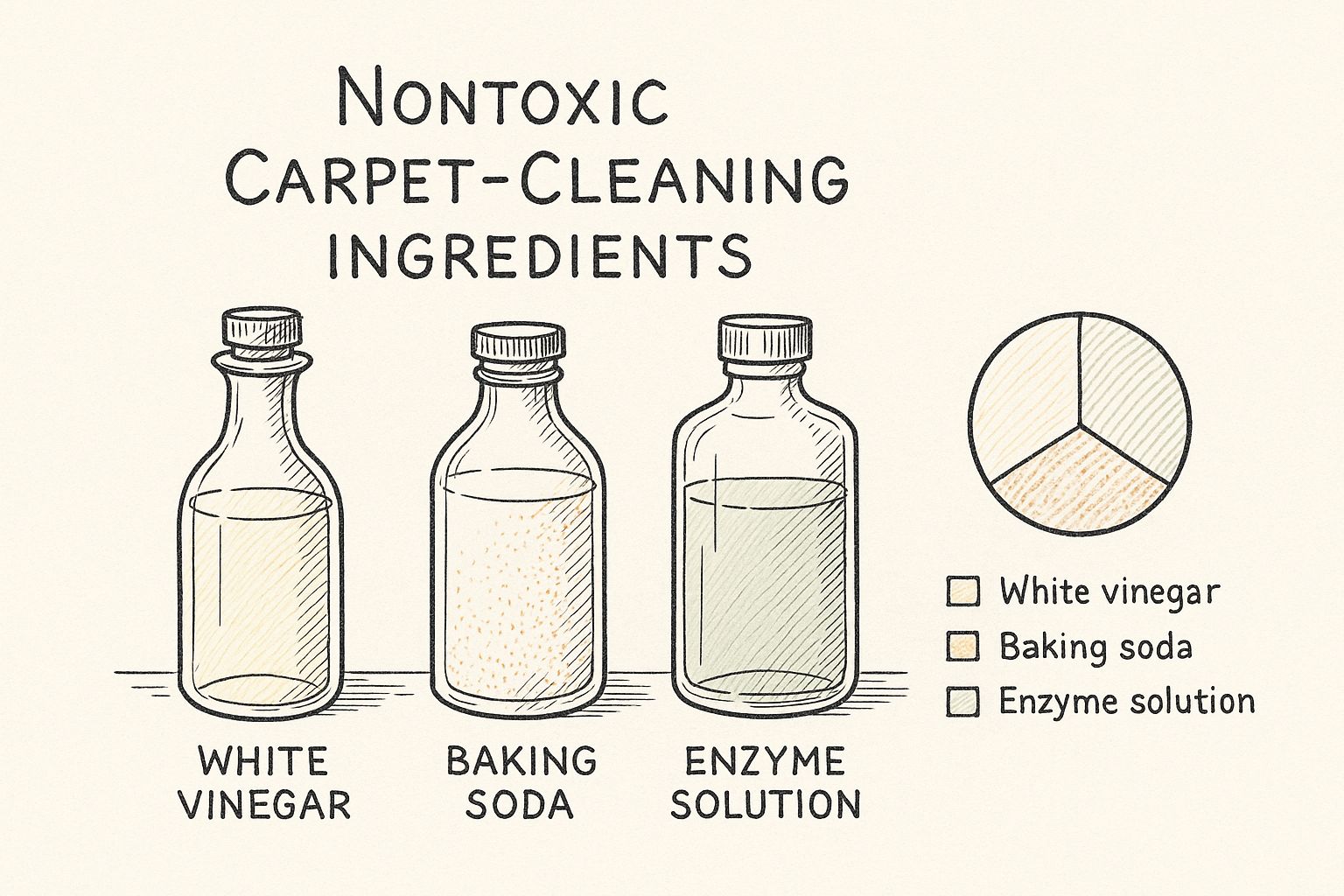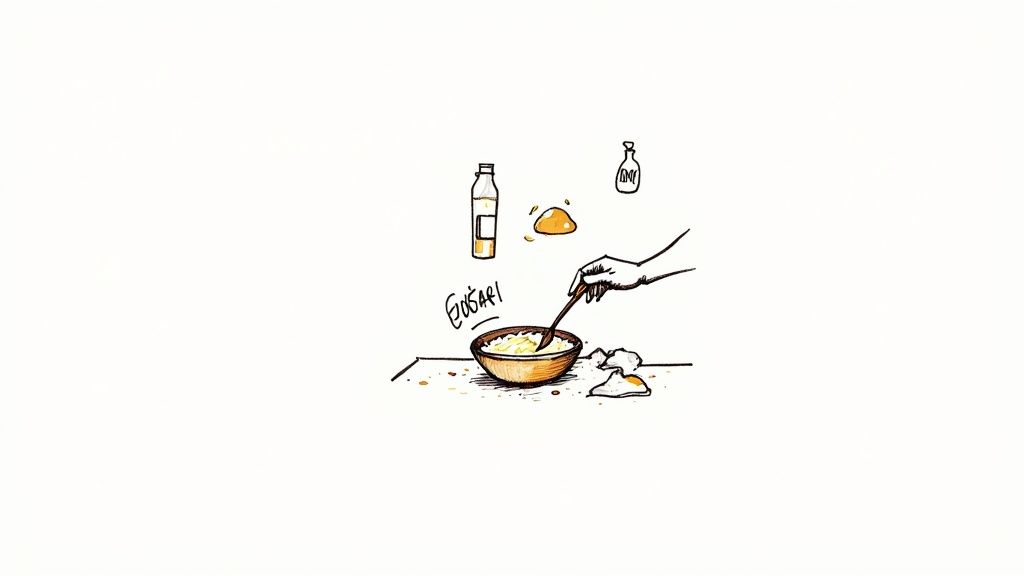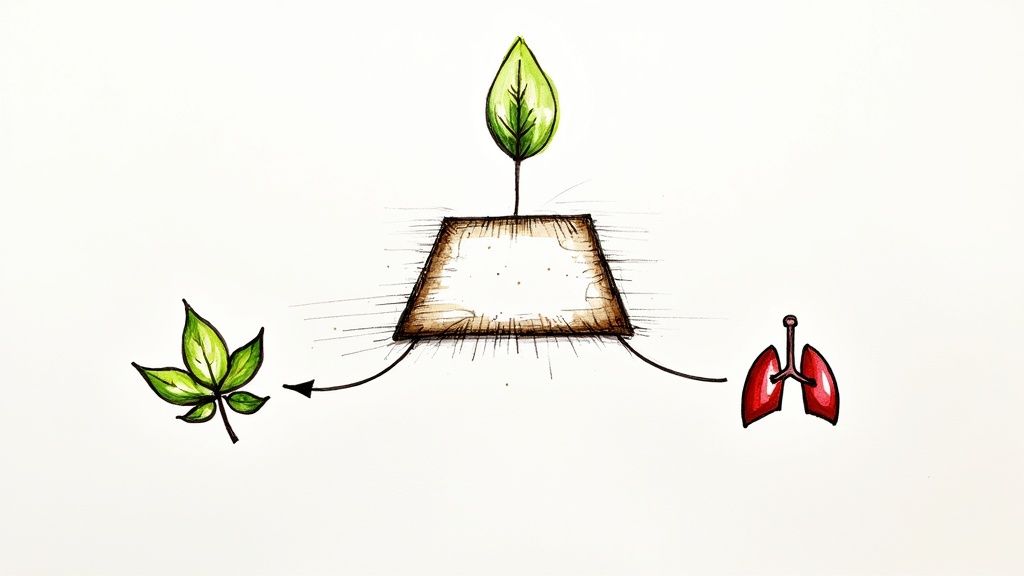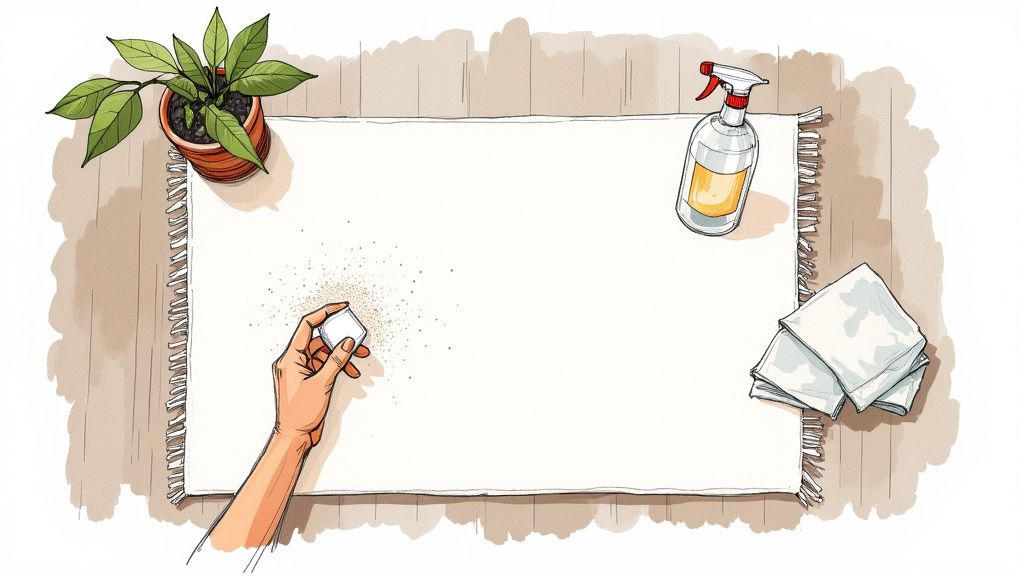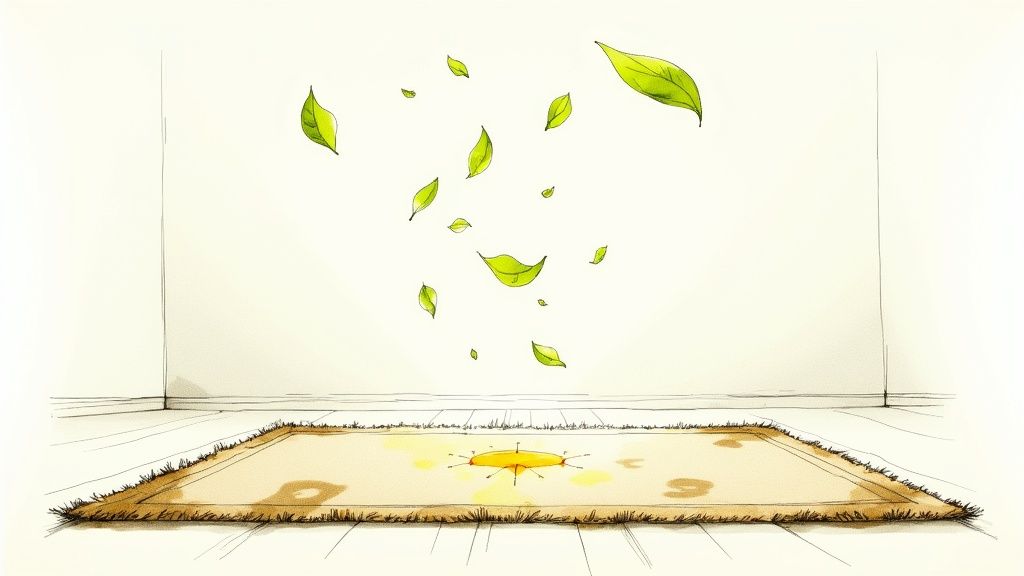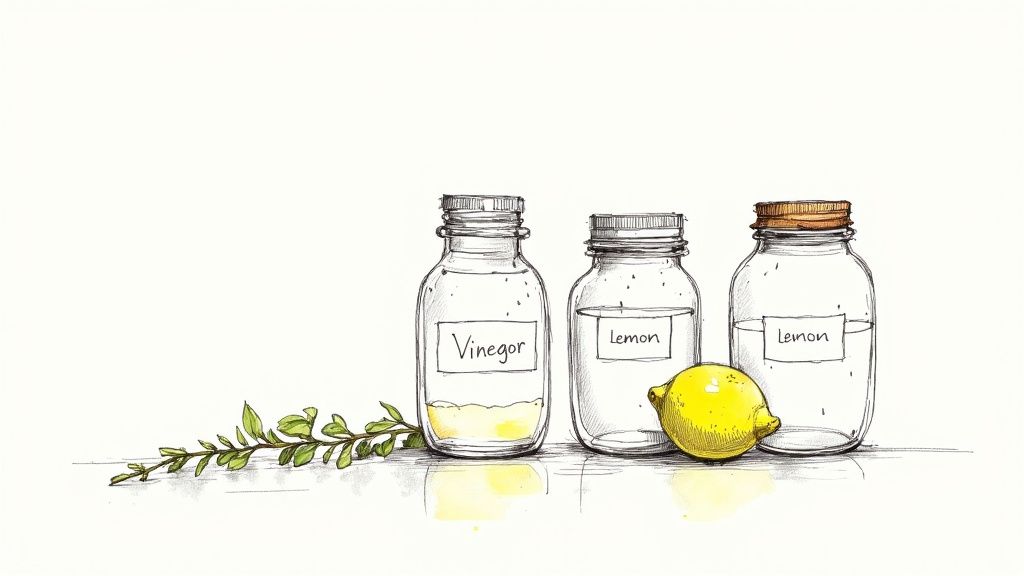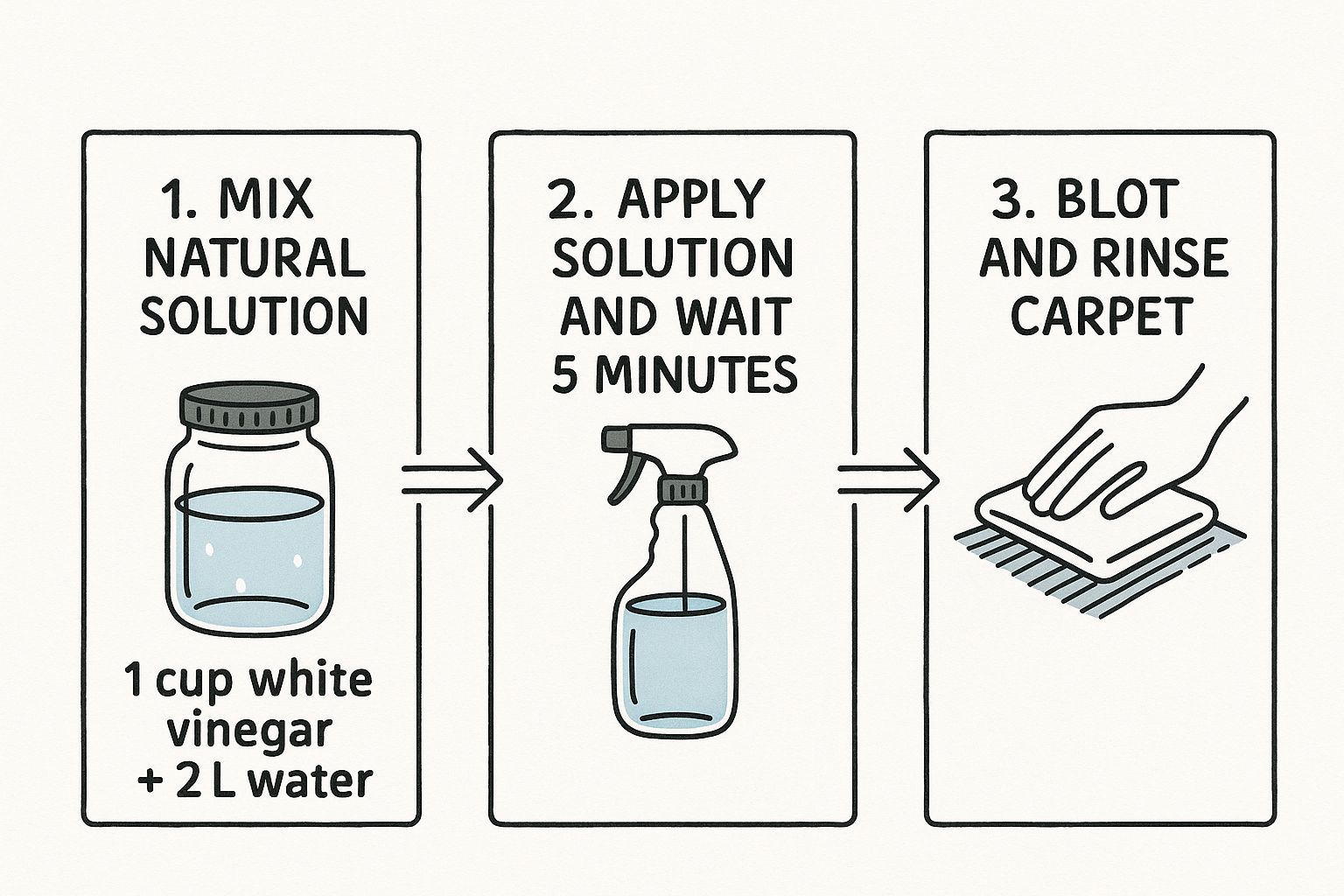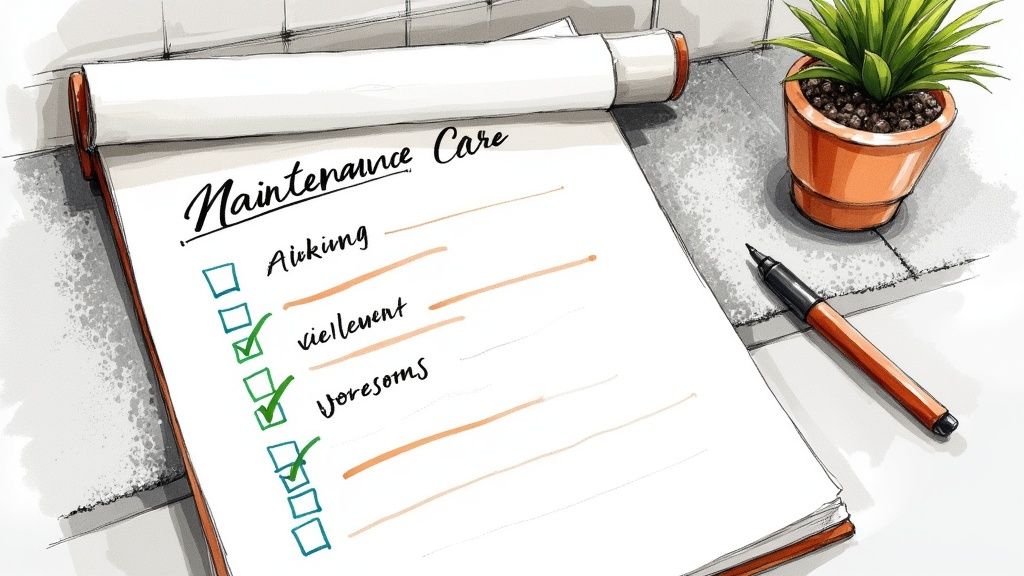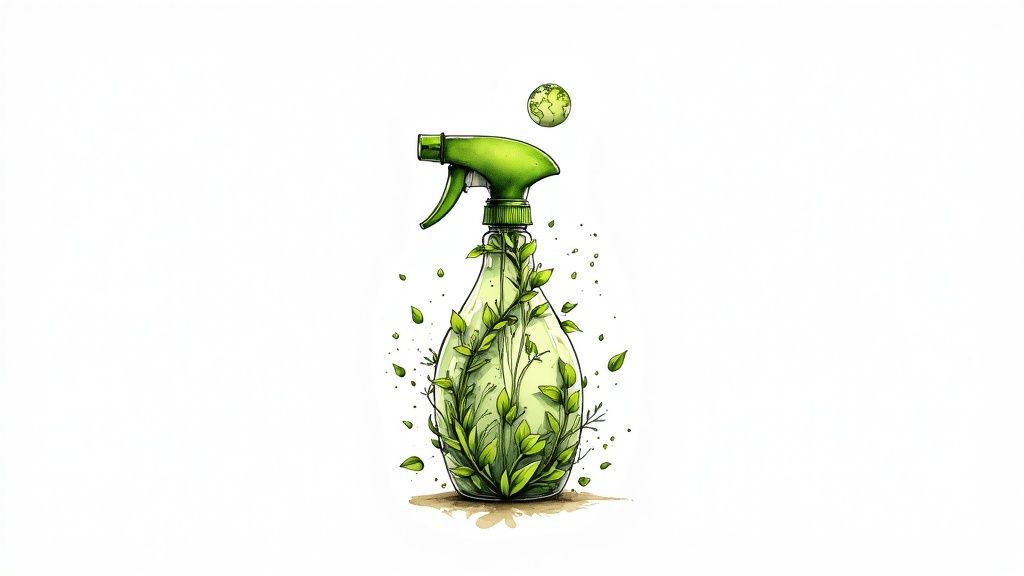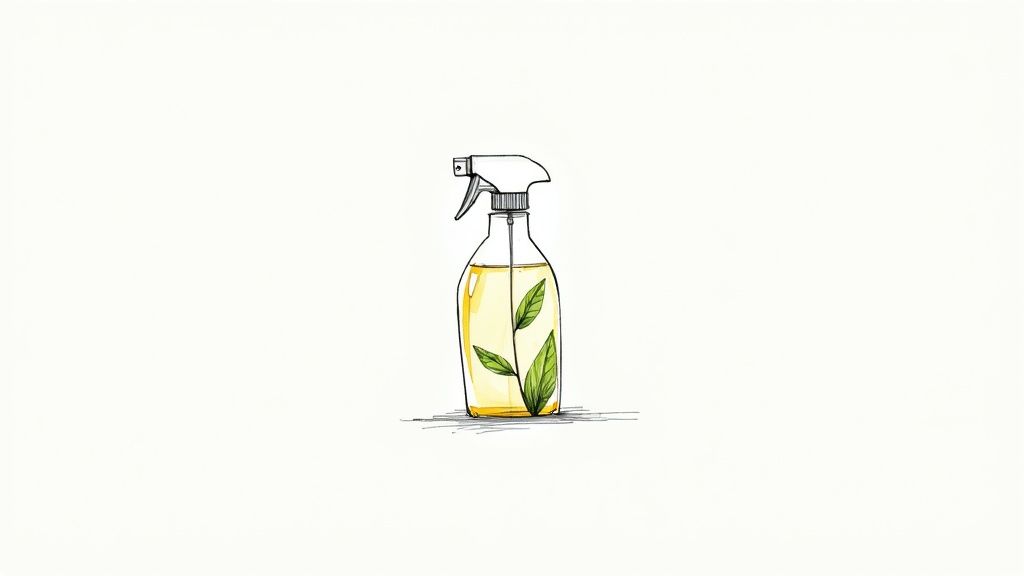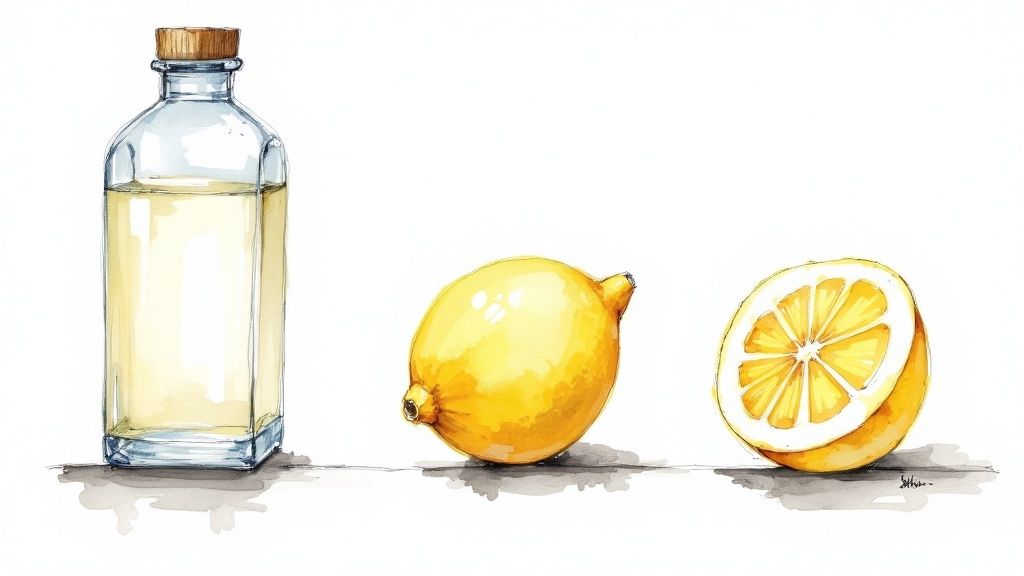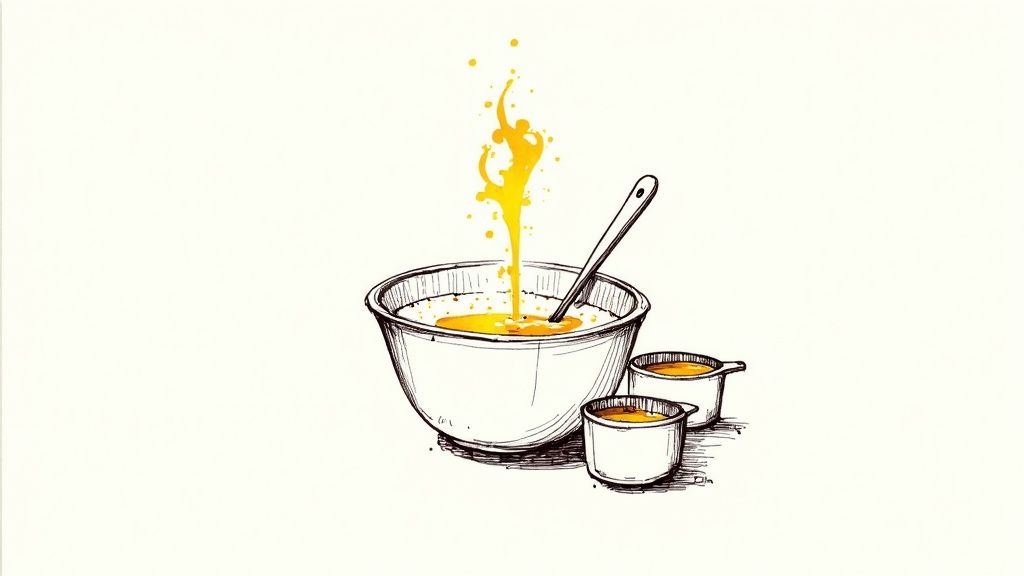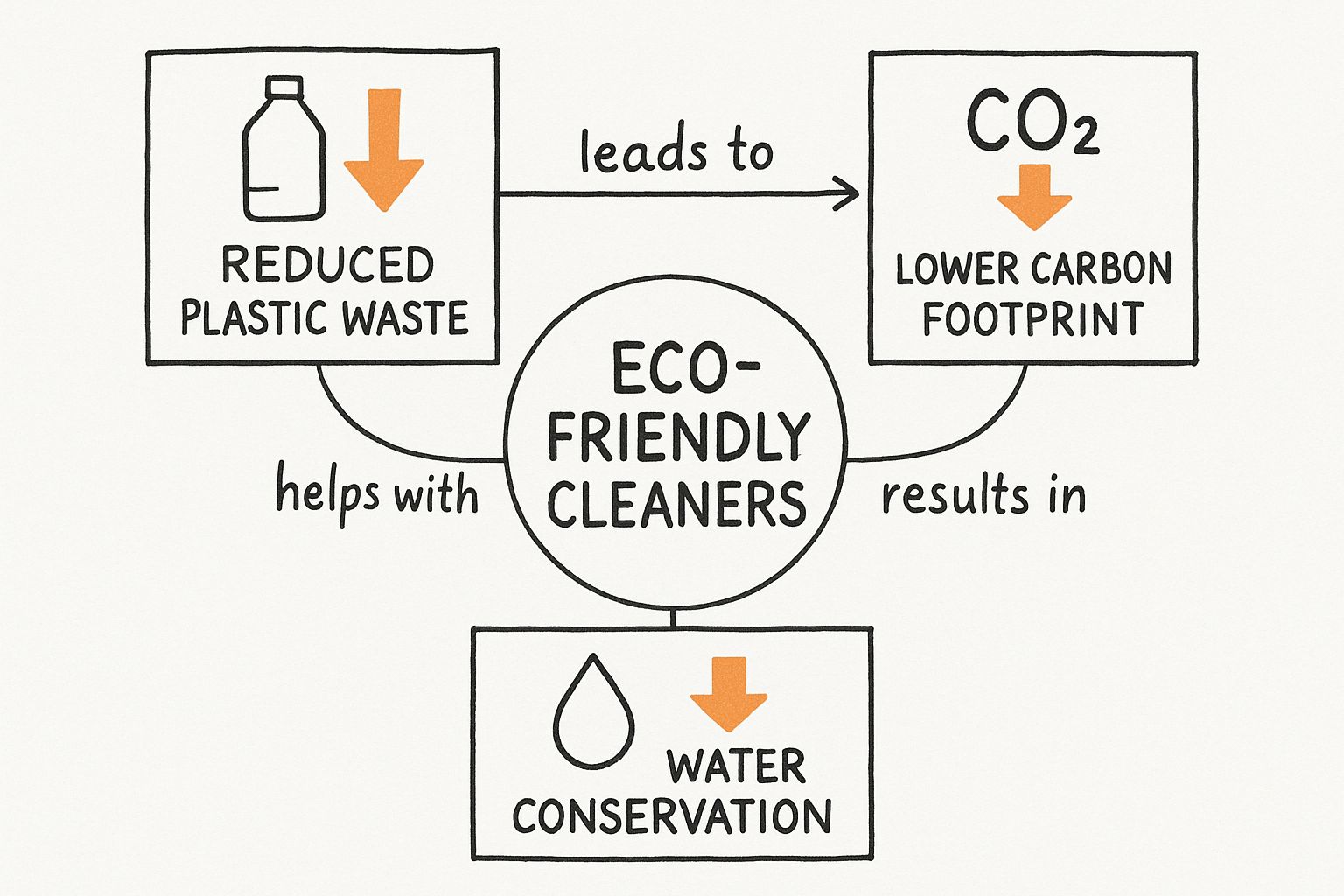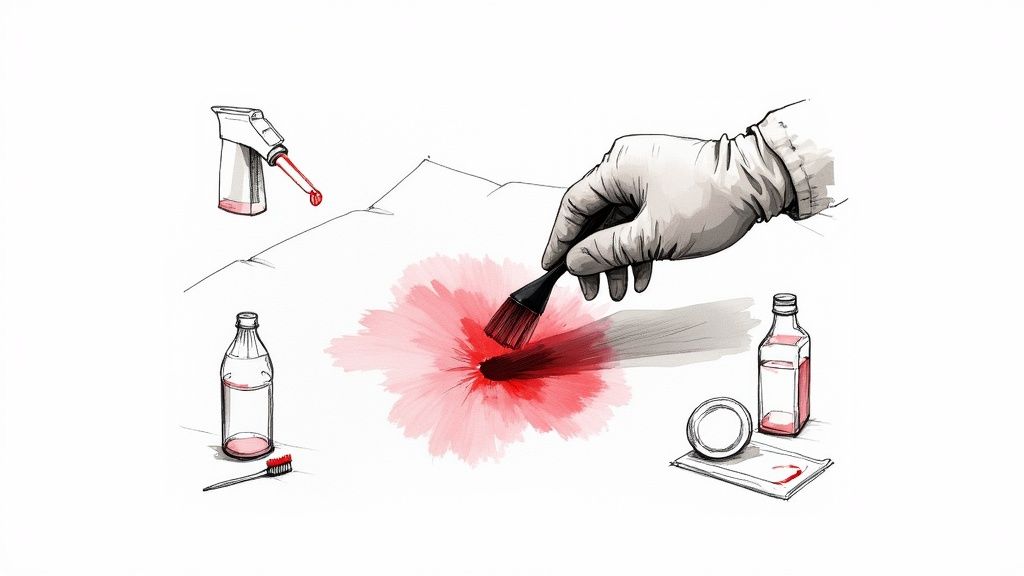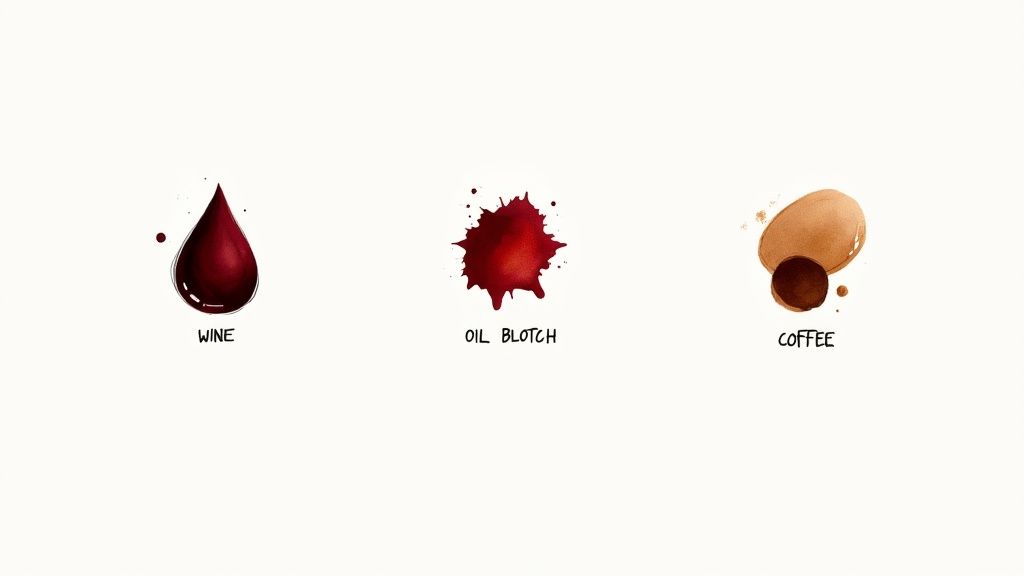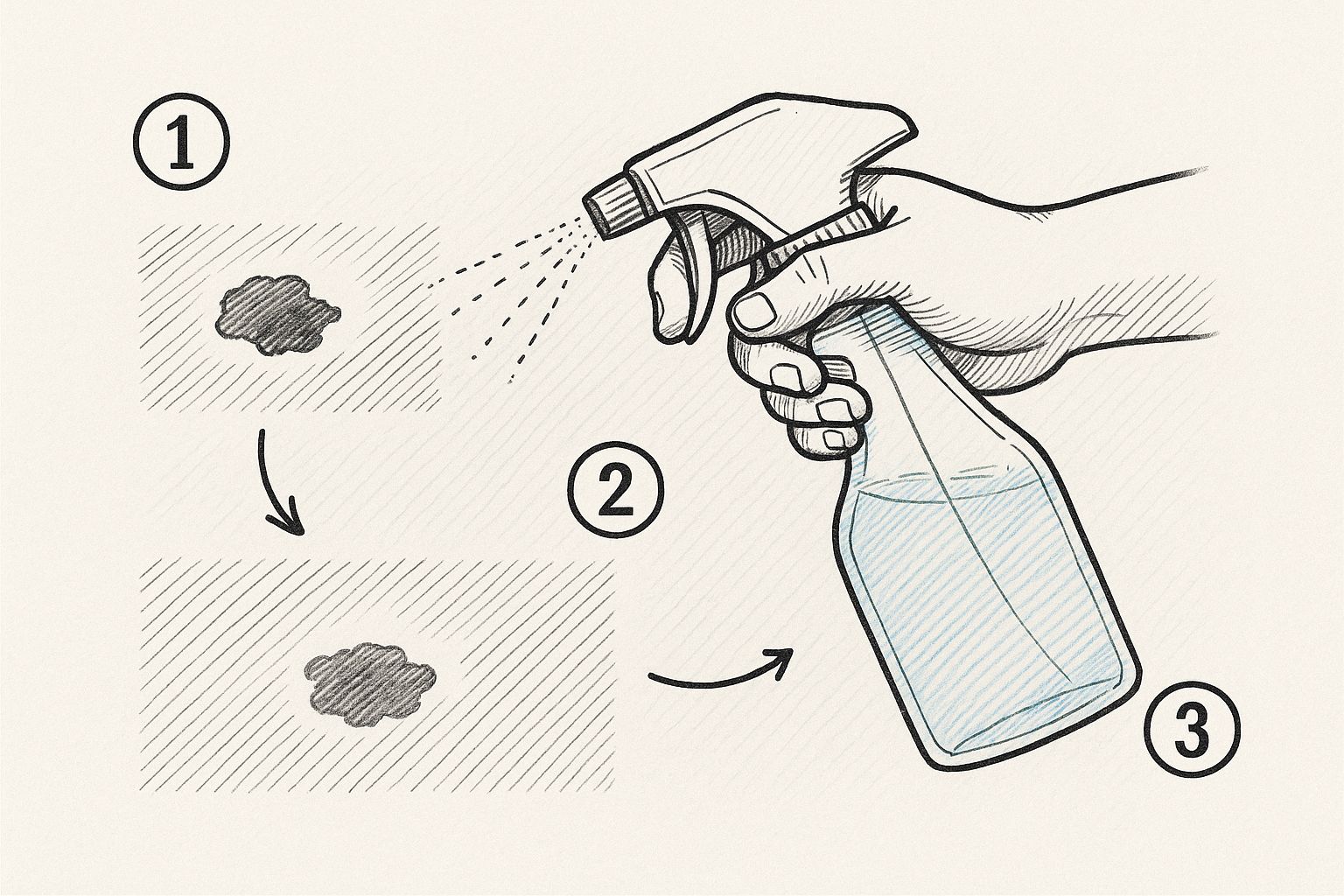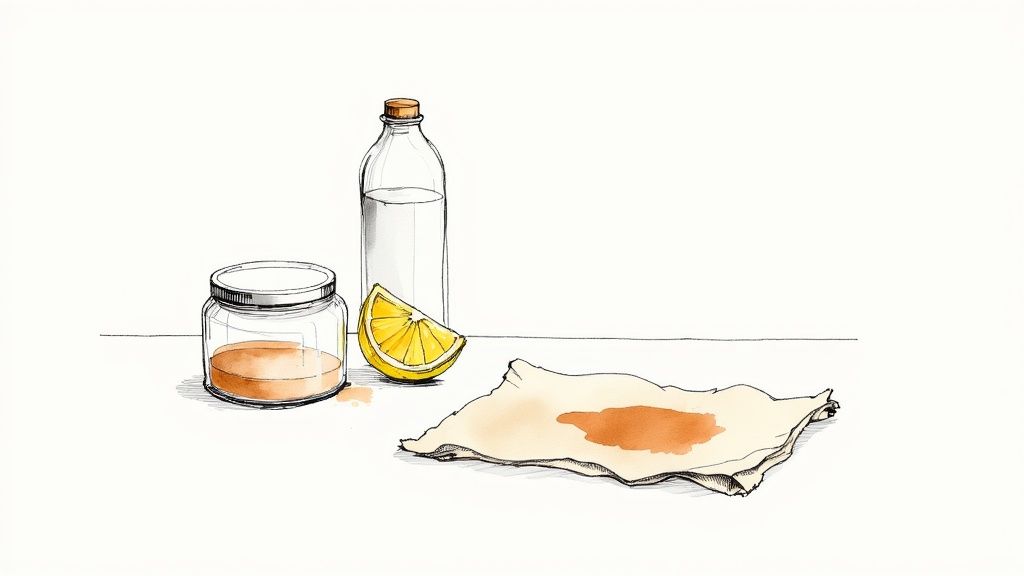Let’s be honest, a vague, hastily scribbled inspection report is a dispute just waiting to happen. If you’re a landlord or property manager in the UK, a solid property inspection report template isn't just about ticking boxes—it's your frontline defence against unfair deposit claims and a crucial tool for protecting your asset's value. Think of it as undeniable, time-stamped proof of a property's condition.
Why a Solid Inspection Template Is a Non-Negotiable
In the UK’s bustling property market, clarity is everything. A standardised report template shifts you away from subjective notes on a crumpled notepad to an objective, evidence-based system. That consistency is gold, whether you're managing a single flat or a portfolio of a hundred.
Picture this scenario: a tenant is checking out, and you spot several deep scratches across the laminate flooring that you’re sure weren't there before. The tenant, of course, insists they were there when they moved in. Without a detailed move-in report, complete with photos and specific notes, your claim against their deposit descends into a classic "he said, she said" nightmare.
Now, imagine that same checkout, but this time you're armed with a proper report. Your move-in document clearly states, "Living room flooring: Good condition, no visible scratches or scuffs," right next to a timestamped photo. The argument simply dissolves. The evidence is right there in black and white, protecting your investment and keeping things fair for everyone involved.
Navigating a Competitive Market
The pressure to have this kind of documentation is only increasing in today's competitive rental and sales landscape. A detailed property inspection report template helps manage everyone's expectations right from the start. For would-be tenants or buyers, it offers a transparent, professional look at the property’s real condition, which goes a long way in building trust.
This is particularly true in a fast-moving market. A recent housing report from Propertymark noted that the number of viewings per available property climbed to three in May 2025, partly driven by shifts in Stamp Duty. With more eyes on every property, a clear, standardised report helps serious applicants get the information they need to make a quick, informed decision. You can read the complete analysis in their Housing Insight Report here.
A well-structured template isn't just a checklist; it's a communication tool. It sets a clear standard for how the property should be looked after and returned, cutting down on misunderstandings and helping build a better landlord-tenant relationship from day one.
A good template essentially brings order to what can otherwise be a chaotic process. It makes sure nothing gets missed, from the state of the skirting boards to whether the extractor fan is working correctly. This meticulous approach has some major advantages:
- Dispute Resolution: It gives you concrete evidence to present to tenancy deposit schemes, which almost always favour the party with detailed records.
- Maintenance Planning: Using the same template for regular inspections helps you spot small problems before they spiral into expensive repairs.
- Legal Compliance: It shows you're doing your due diligence to provide a safe and habitable home, which is a core part of your responsibilities as a UK landlord.
- Professionalism: It sends a clear signal to tenants that you are an organised and professional landlord, which can help you attract better-quality applicants.
It's clear that a template benefits more than just the landlord. Let's take a quick look at who wins when a clear, consistent report is used.
Who Benefits from a Property Inspection Template
Here’s a quick look at the key players in a property transaction and the main advantage a standardised report offers each.
| Stakeholder | Primary Benefit |
|---|---|
| Landlords | Strong evidence to protect their investment and fairly claim for damages from the deposit. |
| Property Managers | Increased efficiency, consistency across a portfolio, and a professional service for clients. |
| Tenants | A clear record of the property's initial condition, protecting them from unfair charges for pre-existing issues. |
| Letting Agents | Streamlined check-in/check-out processes and fewer disputes to mediate between landlords and tenants. |
| Deposit Schemes | Clear, objective evidence to make fair and quick adjudication decisions when disputes arise. |
Ultimately, a shared, transparent record helps build trust and reduces friction for everyone involved in the rental process, making for a smoother tenancy from start to finish.
Building Your Template From the Ground Up
Ditching the generic checklists for a custom-built template is a game-changer. Think of it as creating your own blueprint for clarity, one where every section has a clear purpose: to document a property's condition without leaving any grey areas. A solid template is your best defence against ambiguity, ensuring every inspection you carry out is consistent and airtight.
This visual guide breaks down the essential layout of a strong property inspection report, showing how to organise key information so it’s easy to digest at a glance.
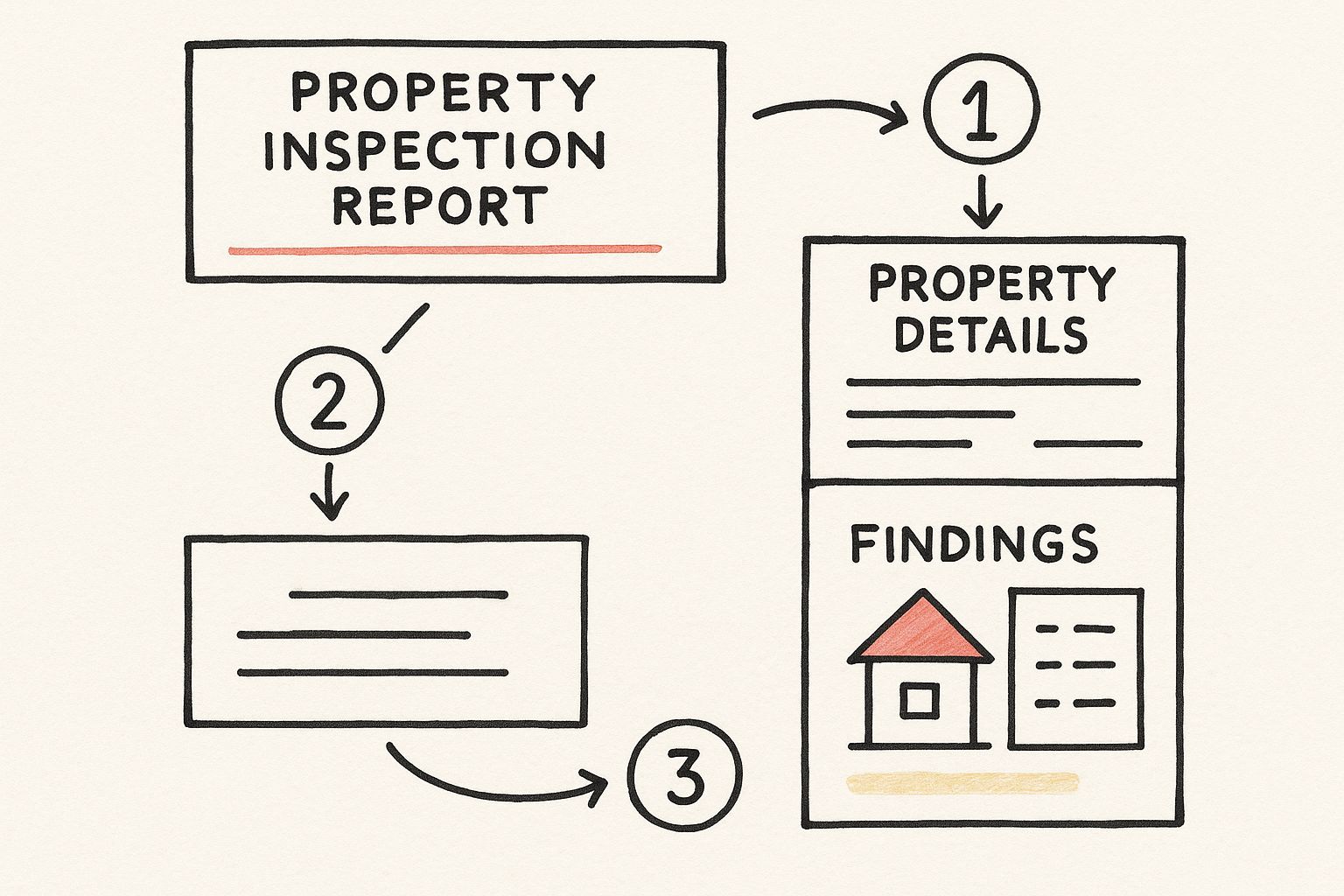
As you can see, a clean, logical structure is everything. From the header details right down to the itemised findings, the goal is a report that anyone can pick up and understand instantly.
Laying the Foundation: Property and Tenancy Details
First things first, every report needs to start with the basics. This is your non-negotiable admin section, the part that gives context to everything else. It might feel like a box-ticking exercise, but getting this wrong—or worse, missing something—can cause huge headaches down the line.
Your template absolutely must have clear, distinct fields for:
- Property Address: The full address, including the postcode. No room for confusion here.
- Inspection Date and Time: This is critical for creating a precise timeline of the property's condition.
- Inspector's Name: Who is accountable for the report?
- Tenant(s) Name(s): List everyone on the tenancy agreement.
- Attendees: A quick note on who was actually there during the inspection (e.g., tenant, agent).
This section is the official record. Nailing these details every single time establishes a professional, reliable audit trail from the get-go.
The Heart of the Report: A Room-by-Room Log
Right, this is where the real work begins. The core of any good property inspection report is a detailed, room-by-room breakdown. Instead of one long, intimidating list, you need to organise your template into logical areas like "Living Room," "Kitchen," "Bedroom 1," and so on. This structure makes the whole process methodical and stops you from accidentally skipping over something important.
Within each room's section, you'll want to list out every single component and feature. For a bedroom, that means covering:
- Walls and Ceiling
- Flooring (Carpet/Wood/Laminate)
- Windows and Curtains/Blinds
- Doors and Door Frames
- Light Fittings and Switches
- Radiators
- Skirting Boards
- Fitted Wardrobes
This systematic approach is your best friend. Once you get into the habit of following the same flow in every property, your inspections become faster, more consistent, and frankly, far more accurate.
Implementing a Clear Rating System
Vague descriptions are the enemy of a useful report. Words like "okay" or "worn" are completely subjective and just invite disputes. The best way to kill that ambiguity is to build a simple, clear condition rating system right into your template.
A consistent rating system is the most effective way to translate what you see into objective data. It standardises your assessments and makes it incredibly easy to spot any changes in condition over time.
A common and highly effective system uses just four tiers. It’s simple, but it works.
- New/Good: The item is in great shape, with no visible wear or damage.
- Fair: You can see signs of light wear and tear consistent with its age, but it's still fully functional.
- Poor: The item has significant damage or wear, or it simply isn't working as it should.
- Action Required: This flags an item that needs immediate attention, whether that’s a repair or a full replacement.
Make sure that next to each item on your checklist, you have columns for its rating, a space for descriptive notes, and—this is crucial—a placeholder for a photograph. Pairing a rating like "Poor" with a specific note like "Large crack across top right corner of window pane" and a timestamped photo creates an undeniable record. It’s this powerful trio of rating, description, and visual proof that gives your report its authority and stops disputes before they even start.
Going Beyond the Basics: Advanced Sections for a Watertight Report
A standard report will get you by, but a truly professional one anticipates problems before they start. By adding a couple of advanced sections to your property inspection report template, you can turn a simple record-keeping document into a serious tool for managing risk. Think of these additions less as extra paperwork and more as strategic safeguards against some of the most common—and expensive—headaches for UK landlords.

This is where seasoned professionals really set themselves apart. Moving past a simple check for scuffs and scratches shows a real commitment to the property's upkeep and the tenant's safety, something that can be a lifesaver if a dispute ever arises.
Detailed Damp and Mould Assessment
Damp and mould are the twin spectres that haunt landlords, often spiralling into major tenant complaints and costly repairs. A vague note like "check for damp" on a checklist just won't cut it. Your template needs a dedicated section that prompts a methodical, evidence-based assessment.
This means getting specific with your prompts for the inspector:
- Look for visual cues: Are there any tell-tale signs of mould? Note down any black, green, or white spots, peeling wallpaper, or discoloured patches on walls and ceilings.
- Get a moisture reading: This is crucial. Use a moisture meter to get actual readings in high-risk areas like bathrooms, kitchens, and around window frames. Recording a specific number, like "18% moisture reading on wall adjacent to shower", provides objective data that’s incredibly difficult to argue with.
- Check the ventilation: How are the extractor fans working? Are the trickle vents in the windows open and clear? Note the condition of all ventilation systems.
I once worked with a landlord who was dragged into a hefty deposit dispute over a persistent damp problem. The tenant insisted it was a structural issue that was there when they moved in. Luckily, the landlord's move-in report was incredibly thorough. It included moisture meter readings for every single room, all of which were well within the normal range. That simple piece of data proved the problem had developed during the tenancy, saving him thousands.
Adding a damp assessment section isn't just about spotting problems. It's about establishing a clear, scientific baseline of the property's condition right from day one.
If you do find that mould has already set in, tackling it properly is essential. You can find practical advice in our guide on how to remove stubborn stains and mould effectively.
Fire Safety Compliance Checklist
As a UK landlord, fire safety isn't just a good idea—it's a legal obligation. Your report has to reflect this seriousness. A dedicated checklist ensures every safety measure is systematically checked and verified at each inspection. This is more than just ticking a box to say an alarm is present; it’s about documenting that it actually works.
Make sure your checklist has fields to confirm the following:
- Smoke Alarms: Are they installed on every floor of the property? Crucially, you need to document the exact date you tested each alarm and confirm its battery is functional.
- Carbon Monoxide Alarms: Is there an alarm in any room that has a solid fuel-burning appliance, such as a wood-burning stove or an open fire? Test it and record the result.
- Fire Exits: Are all escape routes, like hallways and stairwells, completely clear of clutter and obstructions?
- Furnishings: Have a quick check to ensure all supplied furnishings carry the 1988 fire safety compliance label.
This kind of detailed record is your proof of due diligence. It shows your commitment to keeping tenants safe, which is fundamental for both legal compliance and your own peace of mind.
How to Fill Out Your Report Like a Pro
A well-designed property inspection report template is a great start, but its true value comes alive in how you use it. The real skill is shifting from casual observations to objective, undeniable facts. This is how a simple checklist becomes a professional, evidence-based document that holds up under pressure.
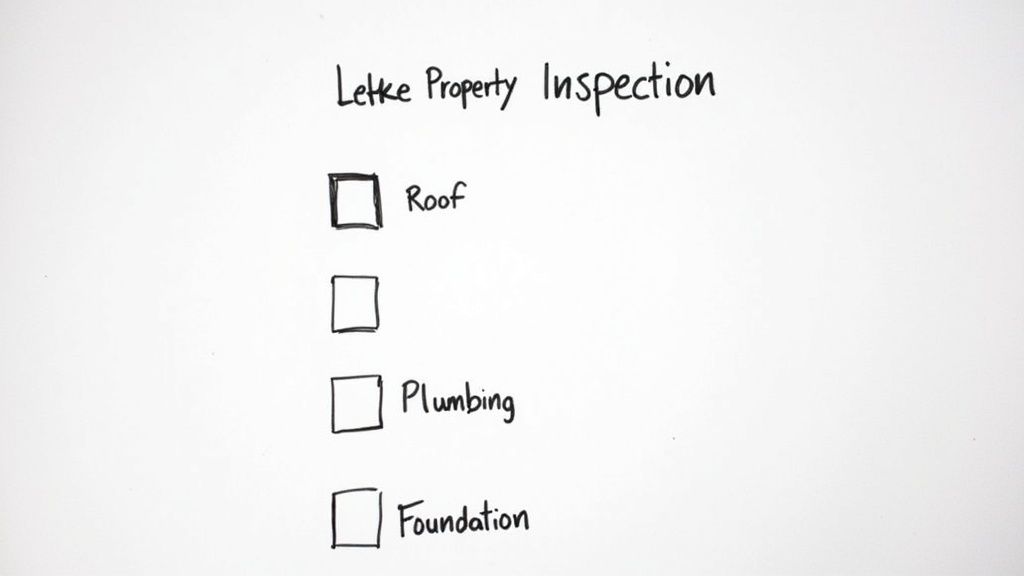
It all comes down to training your eye for detail and recording everything with absolute precision. A vague note like 'wall is scuffed' is practically useless if a dispute arises.
What you need is specifics. For example: "3-inch black scuff mark on living room wall, 12 inches above the skirting board." That level of detail leaves no room for argument.
Use Objective and Factual Language
Being consistent with your language is crucial. It’s what allows you to build a reliable history of the property's condition from one inspection to the next. When you stick to the facts, your report can't be brushed off as just your opinion.
You need to think like a reporter telling a story—document what you can see, touch, and measure. It’s a simple change in approach that makes a world of difference.
Here’s a quick comparison:
- Vague Entry: "Carpet has a stain."
- Pro Entry: "Circular, dark brown stain on carpet, approx. 5cm in diameter, located under the window in Bedroom 2."
This method doesn't just make your report stronger; it immediately signals your professionalism. In a property market where every detail matters, this is non-negotiable. With the average UK house price hitting £269,079 as of June 2025, according to the UK House Price Index, accurate assessments are more critical than ever. To get a better feel for the market, you can explore the latest property price trends from the Land Registry.
Master the Art of Strategic Photography
While your words are important, a picture provides proof that's impossible to ignore. Photography shouldn't be an afterthought; it needs to be a core part of your inspection strategy. Don't just snap a quick, blurry photo of the damage and move on.
Your photos should tell a complete story. A close-up shows the damage, but a wider shot provides the context, making it impossible to dispute the location or scale of the issue.
For every single issue you find, you should be taking at least two photos:
- The Context Shot: A wider angle that shows the problem area in relation to the rest of the room.
- The Close-Up: A detailed shot that clearly highlights the specific issue, whether it’s a crack in a tile or a stain on a worktop.
I always make sure my photos are timestamped and embedded directly into the report right next to the written note. This creates a solid, unbreakable link between your description and the visual evidence.
And when you do spot issues with dirt or grime, remember that a professional clean can often sort things out before they become a bigger problem. You can even schedule a professional cleaning service to tackle any cleanliness issues flagged in your report, getting the property ready for its next viewing or tenant.
The Common Pitfalls That Can Cost You Dearly
There's no cheaper education than learning from someone else's mistakes. When it comes to your property inspection report, a few common oversights can turn a helpful tool into a major headache, especially when it's time to negotiate the deposit. Getting this right from the start is about protecting your investment.
One of the biggest—and most costly—mistakes is being vague. A simple note like "Carpet damage" is practically useless if a dispute arises. It just doesn't have the factual weight to hold up under scrutiny. You're basically leaving the door wide open for the tenant to argue the point.
Don't Overlook the "Minor" Details
It's so easy to glance past the small stuff. A tiny chip in a skirting board, a slightly loose handle on a kitchen cabinet—they seem trivial. But these little things have a habit of adding up during a tenancy. What's more, if you don't log them, a tenant can easily claim that bigger, more expensive damage was also already there when they moved in.
Your report has to be thorough. A well-designed template should guide you to be meticulous, building an undeniable record of the property's condition right from day one.
Your report is only as strong as its weakest link. Every scuff, scratch, and loose fixture you don't record is a potential loophole that could cost you serious time and money down the line.
Another classic error is forgetting to get signatures. Without the tenant's signature, your report is just your opinion. A signature transforms it into a mutually agreed-upon record of the property's condition at a specific point in time. It’s your proof.
Let's look at the difference a little detail makes:
- A Vague Entry: "Carpet damage"
- A Legally Sound Entry: "Circular burn mark on carpet, approx. 2cm diameter, located by the main doorway."
That level of precision just shuts down any potential for argument.
Failing to Evolve Your Template
Finally, treating your template as a "set it and forget it" document is a mistake. The property world in the UK is always shifting, with new regulations and building standards popping up. Think about new-build properties—they come with different expectations and safety compliance rules.
Since late 2023, for example, data from the Building Safety Regulator has become much more significant, adding new layers of safety checks to reports for newer homes. Your template has to keep up with these changes to stay effective and compliant. You can find out more about these kinds of shifts in the UK housing market and its regulatory changes.
Your Questions on Inspection Reports Answered
Even the most seasoned landlord or agent has questions when it comes to property inspection reports. It’s completely normal. Getting the details right means you can use your template confidently, knowing it's a solid, professional tool that protects everyone involved. Let's dig into some of the most common queries I hear.
How Often Should I Update My Template?
Think of your template as a living document, not something you create once and forget about. I recommend giving it a thorough review at least once a year. Why? Because regulations are always shifting, especially around health and safety like smoke alarm requirements or electrical standards. An annual check-in keeps you compliant.
Beyond that, make small tweaks as you go. If you come across a unique issue during an inspection—say, a specific type of window lock you've never seen before—add a field for it to your template right away. This kind of continuous improvement is what makes a good report a great one over time.
Are Digital Inspection Reports Better Than Paper?
In my experience, absolutely. Digital templates have a massive advantage over the old pen-and-paper method. You can embed high-resolution, timestamped photos and even short videos directly into the report. That kind of evidence is incredibly powerful and hard to dispute if a problem comes up later.
A digital report gives you a professional, searchable PDF that’s easy to email, sign electronically, and store securely. While a paper report can get the job done, digital tools are simply more efficient and create a much stronger audit trail that holds up better under scrutiny.
Plus, you don't have to worry about losing or damaging a single piece of paper—everything is backed up and safe.
Can I Just Use a Generic Online Template?
Grabbing a free template from the internet can be a decent starting point, but it should never be your final version. Many of these generic documents are far too basic for the UK market and often miss out on crucial, legally required checks. For instance, they rarely cover the specific requirements for Houses in Multiple Occupation (HMOs).
Always take the time to customise a generic template. Tailor it to the specific property and, most importantly, make sure it lines up with current UK landlord-tenant laws. The custom details you add are what transform it from a simple checklist into a genuinely valuable document.
What's the Difference Between an Inventory and an Inspection Report?
This is a common point of confusion. An inventory is a highly detailed record of a property's contents and their condition right at the start of a tenancy. It sets the baseline. An inspection report, on the other hand, is what you use for mid-tenancy checks or at the end of the tenancy to compare the property's current state against that original inventory.
A robust property inspection report template can often be adapted for both uses, but that initial inventory is typically the most exhaustive document of all. For more practical advice on property maintenance and upkeep, you can find some great articles on the Signal Cleaning blog.
Keeping your property in prime condition is much simpler with a professional team on your side. Signal Cleaning provides reliable, high-quality cleaning services across Oxford, ensuring your property always makes the best impression. You can book your next clean in just a few clicks at https://signalcleaning.co.uk.
